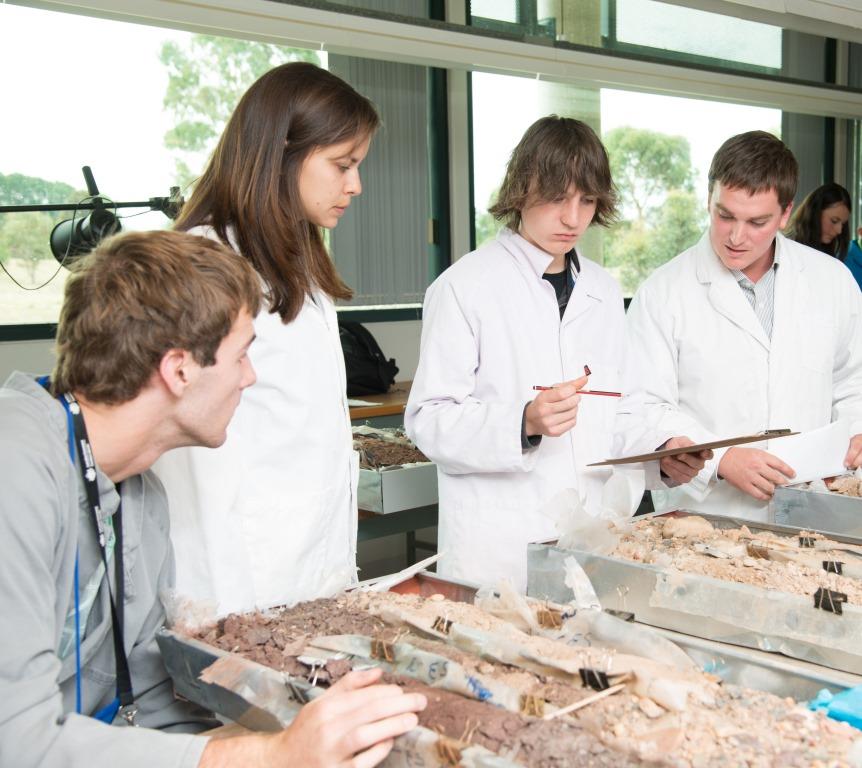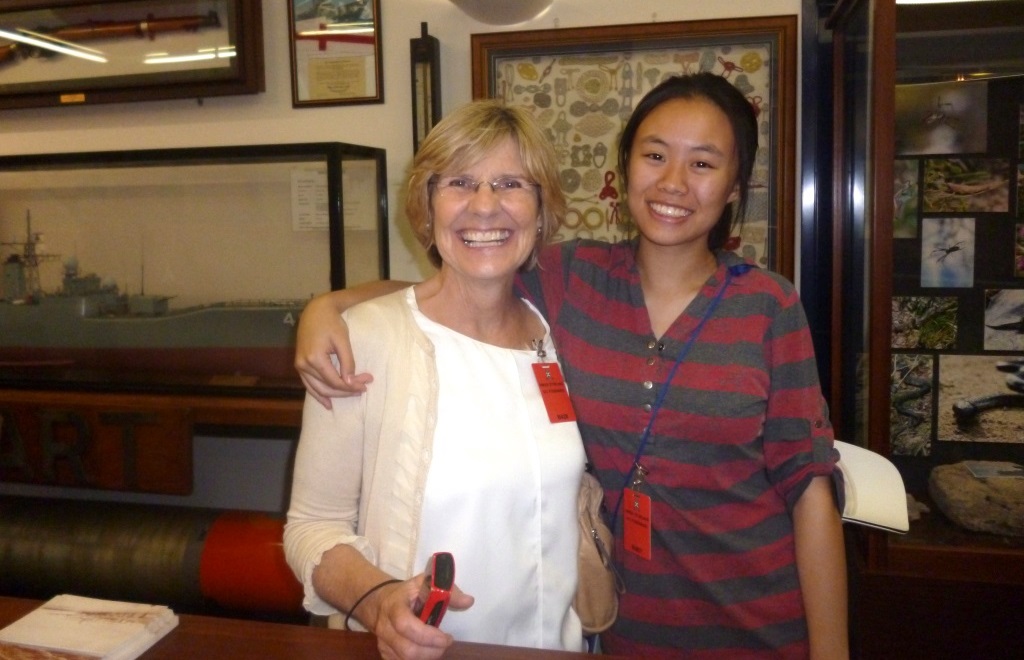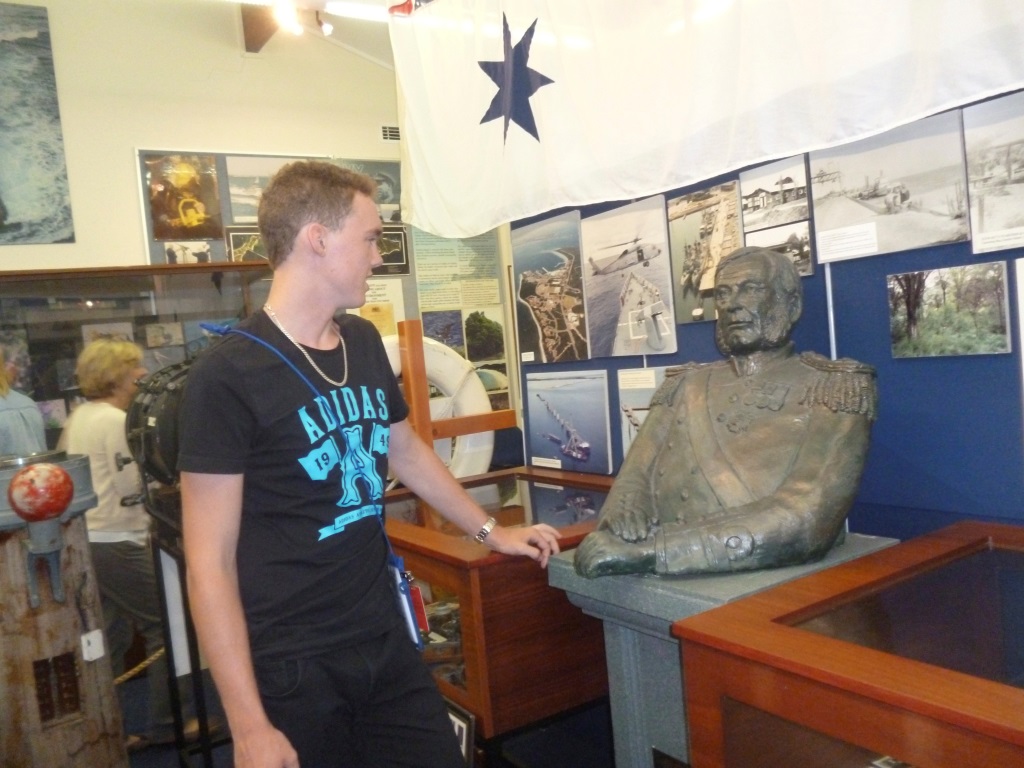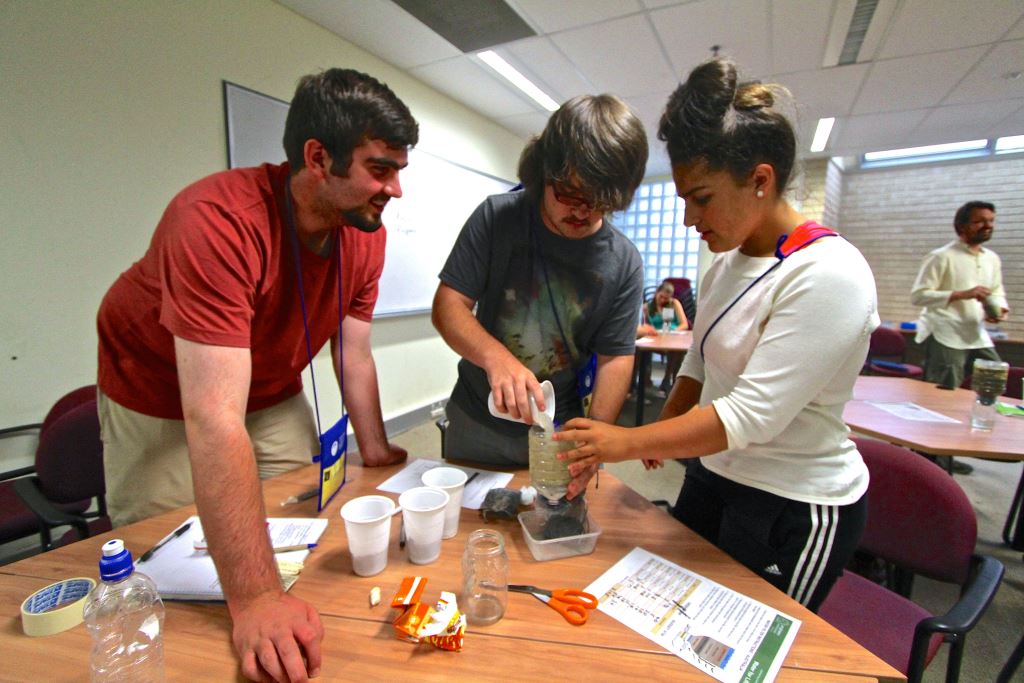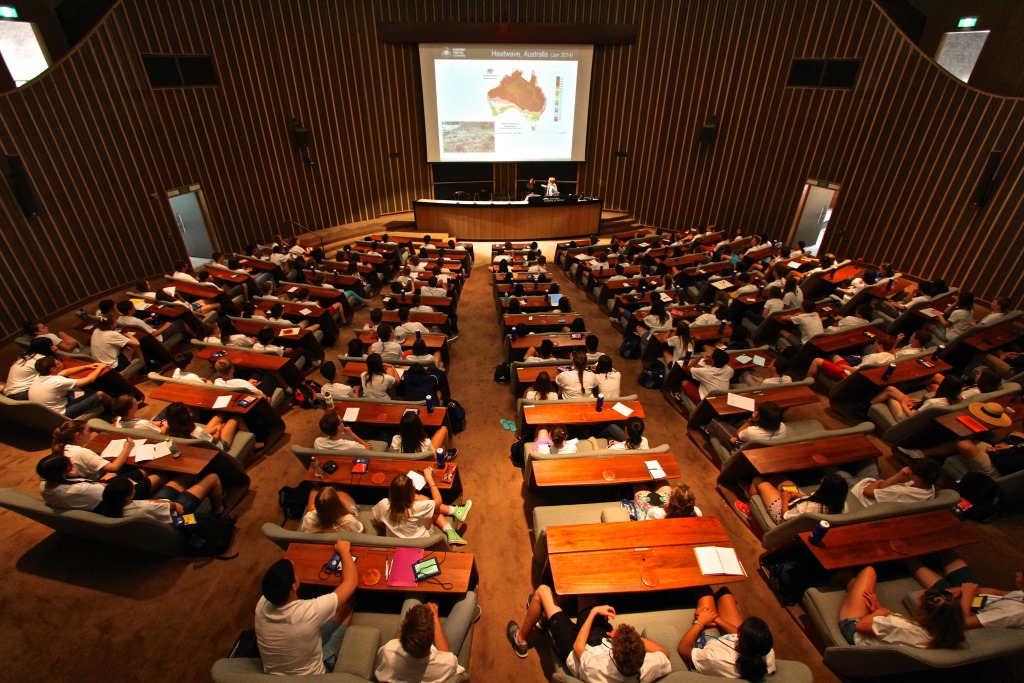At Geoscience Australia the students engaged in mini-research projects run by practising geoscientists (some of whom are former NYSF students). They tackled a problem involving the discovery of underground potable water, which included different research methodologies. At the conclusion of the lab visit the students shared their findings with their peers and scientists. The exercise gave the students a good feel for the multidisciplinary nature of geoscience.
The Alcoa Huntly Mine site provided environmental science students with an in-depth tour exploring Alcoa's two stages of interaction with areas of concentrated bauxite, firstly mining and extraction, and then long-term rehabilitation. Touring both current open mine sites, participating in a number of presentations and speaking with geologists and environmental scientists, as well as a practical lesson in botanical data collection, the students were exposed to opportunities in their field of interest.
The Defence Science and Technology Organisation (DSTO) in Western Australia operates from the largest RAN base, HMAS Stirling, south of Perth, and is the base for the ANZAC Class frigates and Collins Class submarines. The recently retired Chief Scientist of Western Australia, Professor Lyn Beazley, accompanied students on their site tour. The students gained an appreciation of the size and complexity of Navy operations including seeing vessels in port. At this DSTO site, where much of the focus is on submarine operations, they joined professional scientists in using computer simulations to design control rooms in submarines, explored issues such as resonance and noise transmission when submerged, and ways of reducing fatigue and stress for staff operating complex electronic equipment in limited spaces. This site visit was a very unique opportunity designed for NYSF students.
The ACCIONA Windfarm at Gunning saw students accompanied on their visit by the NSW Minister for Primary Industries and Small Business and member for Burrinjuck Katrina Hodgkinson. Upon invitation from the students, Katrina briefly spoke about the importance of public policy being informed by research particularly in applied areas of science. She also discussed the associated challenges within her electorate involving salinity, natural disasters and sustainability. After this honest discussion Katrina joined the students on a fact-finding tour to explore wind generation of energy.
The Australian National University hosted many groups in different laboratories. One was a task facilitated by Engineers Without Borders, in which students had to design a water filtration system using very basic tools and resources.
Additional visits to Australian Defence Force Academy (ADFA) and the University of New South Wales School of Engineering provided students with tasks involving the measure of airflow over different surfaces, and learning about recent research on hypersonic flight.
At the Australian Academy of Science’s Shine Dome, Dr Bill Lott (Queensland University of Technology) and Dr Katherine Daniell (ANU) combined their respective academic backgrounds to present the Science and Popular Culture Forum. Interacting with the students, Bill and Katherine delved into the space where science, politics and popular culture collide. This forum was facilitated through the perspective of whether there is “iconic science” in Australia. The discussion concluded with the students agreeing that the profile of science in Australian schools needs to be elevated and opportunities in science promoted with inclusivity.
Dr Sue Meek from the Academy of Science also presented to the students about the role of the Academy in Australian science, and explained the history of the iconic building.
